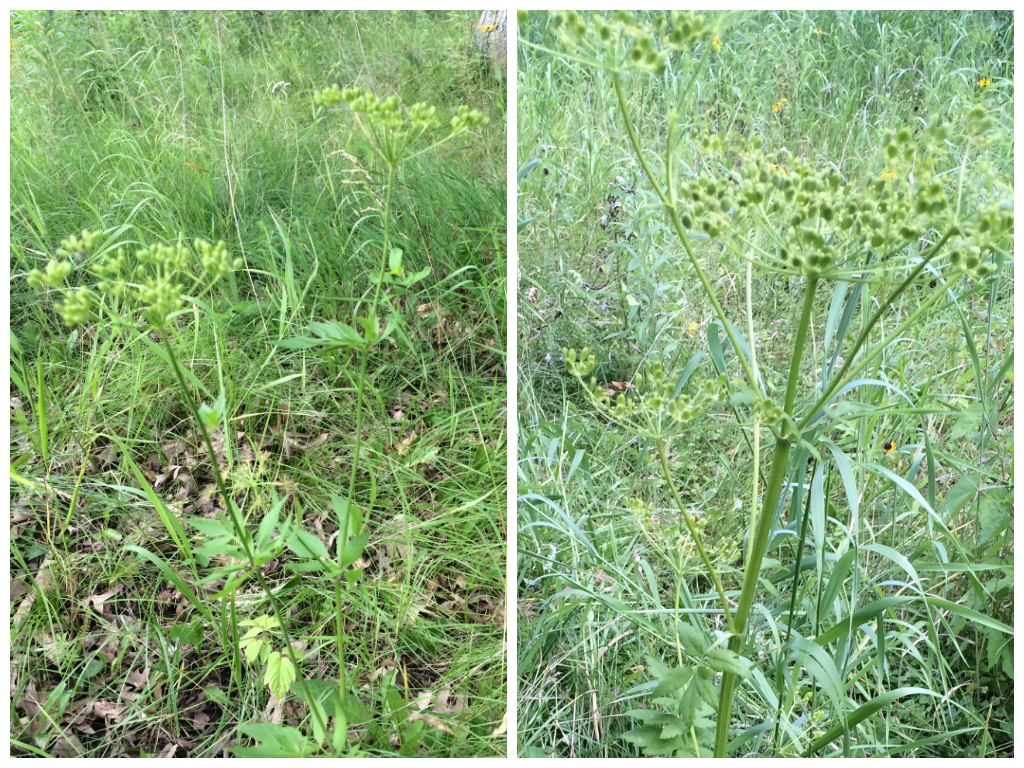A battle in the war against biological warfare


Left: Golden alexander Right: Wild parsnip
By: Angela Mohar
Have you ever heard anyone say to just “let nature take its course?” Whoever first said it probably wasn’t speaking literally, nor did they understand the ecological implications of an invasive species on a native species. The infamous buckthorn, for instance, is just the tip of the iceberg in terms of invasive species. Many more continue to prosper and take over the land. Some of these invasive species, much like native species such as poison ivy, have certain defenses that are unfriendly towards humans. In the last few months I’ve had to learn how to identify poison ivy and other noxious weeds. In fact, for more than two weeks we spent our days armpit-deep battling against wild parsnip, which is an invasive weed that is quite hazardous to humans although its taproot is, in fact, edible. So what’s bad about wild parsnip?


Parsnip sap
Wild parsnip evolved to have juices inside the stems that if they are on your skin when it’s sunny, it can cause horrible skin reactions called phytophotodermatitis (see photo). When I first learned of its capabilities, I was overly careful to not even step on the weeds fearing that the sap would get on my clothing or boots and could later get on my skin. Fortunately for us, no one had a serious reaction. It also is very similar in appearance to other weeds and wild flowers such as golden alexander (first photo), so it can be one nasty surprise to the unsuspecting person gathering wild flowers or out doing some recreational activities. One way to tell the difference is to not only look carefully at the flowers but to also look at the leaves. The leaf configuration of wild parsnip is opposite and compound, making it different from most other similar weeds. It also grows in large patches, so if you see one there are probably a lot more nearby.

Such a prolific weed requires rigorous control methods. In areas that have mature weeds (they’re perennial), mowing during seed production is out of the question since the mowers can just spread the seeds causing a more widespread invasion. One control method we used in addition to foliar spraying was to carefully clip off the seed heads and dispose of them. The methods are simple but very necessary to controlling this public menace. With that said, if you happen to find wild parsnip in a public park, it is okay report it. The more wild parsnip is found and properly dealt with, the safer and more pristine our public lands will be. This is also another good reason to stay on designated trails; you never know what is out there. Mother Nature certainly can be clever in her defenses.
For more information and further identification, visit the DNR website.